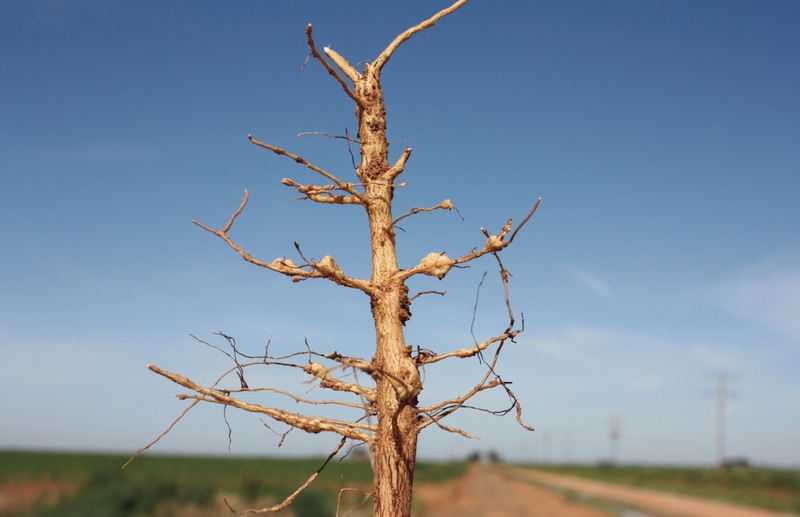Bag and Drag Pigweed Escapes
Pigweed escapes – even the largest ones – are typically not at the top of a cotton producer’s to-do list late in the season.
After all, virtually all of the herbicide windows have expired as harvest is right around the corner. And with the cotton crop mature and fruiting, most growers figure that a pigweed escape here or there won’t damage this year’s crop in any measurable way.
While Extension agronomists don’t argue those points, they do take issue with the idea that late season weed escapes should be left alone. For the past few years, Mid-South weed experts have been arguing that to win the war on pigweeds, growers must learn to minimize the number of seed that goes into the ground.
The challenge of reducing the “seed bank” lies in the weed pest’s prolific ability to produce seed. A single pigweed plant can produce hundreds of thousands, if not millions of seeds. Secondly, Palmer amaranth will set seed at that pace all throughout the year – including those pre-harvest months of September and October.
“Certainly the biggest benefit of removing these late-season escapes is that, if there is a seed head visible on that weed, it’s going to be producing mature seed,” says Darrin Dodds, a cotton specialist with Mississippi State University Extension. “The longer you leave that plant out there, the more seed that are going to mature and develop. So if you go chop it out late season, you’re going to remove at least some of that population from the field.
“That might not make a tremendous benefit this year, but anything you can do to reduce those populations down the road is going to help you,” says Dodds. “That’s regardless if you’re growing soybeans or cotton in that field next year. You want to minimize the amount of pigweed seeds in that field.”
Dodds also cites the potential for harvesting equipment to transport potentially resistant pigweed seed to other parts of a farm, if pigweeds aren’t removed prior to harvest.
“There are a thousand nooks and crannies in a picker for those little bitty seeds to hide,” Dodds says. “If you run into them in one field, and hit a water furrow or bumps or whatever, you’re likely going to drop some of those seeds out in your other fields.”
Agronomists in the Cotton Belt have said for years that chopping pigweed is only the first step in a thorough weed removal program. Mature pigweeds, they say, should also be dragged out of a field to prevent the weed’s seeds from going to ground in the field.
In West Texas, where many cotton producers are dealing with the full brunt of glyphosate-resistant pigweeds for the first time this year, at least one agronomist is recommending an extra precaution for producers dealing with late-season escapes.
Mark Kelley, Texas A&M AgriLife Extension Service Agronomist for Cotton, has suggested that it might not be a bad idea for growers to bag up the seed heads (located at the top of the weed) with a garbage bag and zip tie to put a stop to seeds shedding across a field.
“That’s just what I’ve observed and what I’d do if I had a few escapes out there,” says Kelley. “If you had a few plants you missed, I think it’d be something that’s better to do before you chop the plant, so you’re not scattering the seeds when you chop it and drag the weed out.”
Dodds believes this is a good idea, noting that you can never be too careful when dealing with such a prolific, damaging weed pest.









